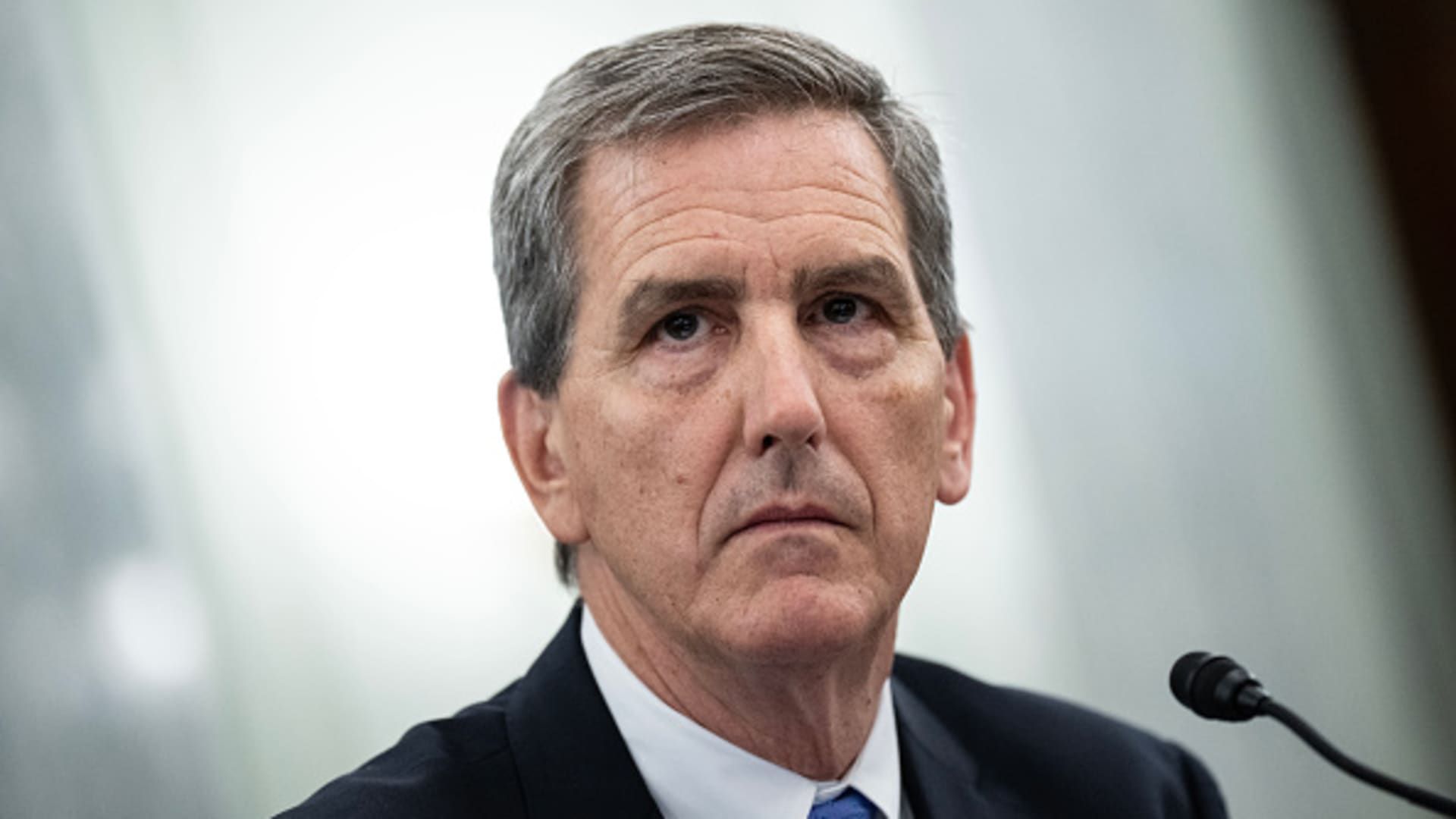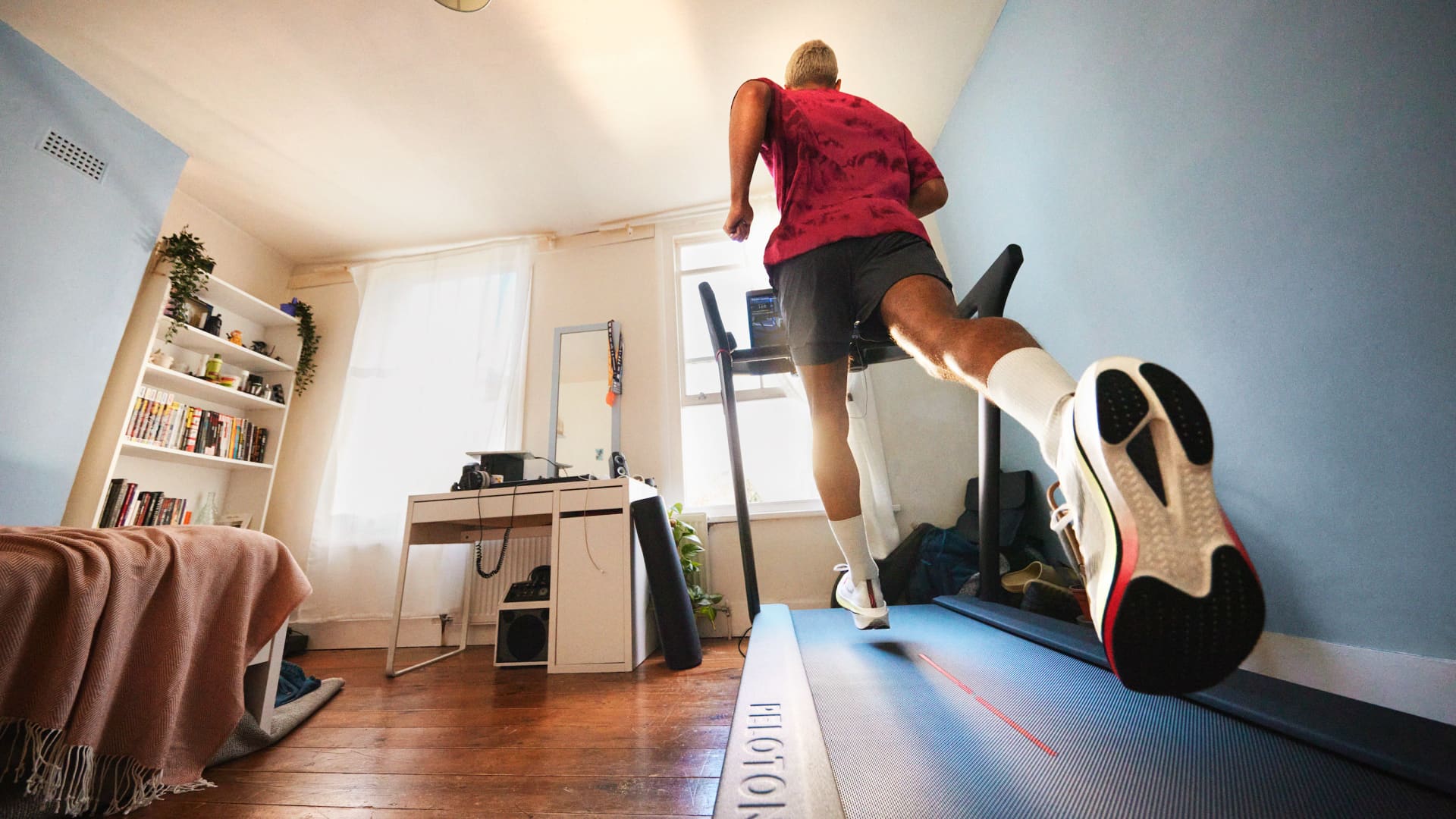Michael Whitaker, candidate to be the next administrator of the Federal Aviation Administration (FAA), testifies during a Senate Commerce, Science and Transportation Committee hearing on Capitol Hill on October 4, 2023 in Washington, DC. The FAA has been without a Senate-confirmed administrator for 18 months. (Photo by Drew Angerer/Getty Images)
Drawn angry | Getty Images News | fake images
WASHINGTON – The Federal Aviation Administration has “boots on the ground” at Boeing's 737 Max factory, and will keep them there until the agency is convinced the manufacturer's quality control system is working, the administrator told CNBC. of the FAA, Mike Whitaker.
The FAA said in early January that it will audit Boeing's Max production line after the door plug on a nearly new Boeing 737 Max 9 exploded in a Alaska Airlines flight at 16,000 feet, exposing passengers to a force so powerful that it sucked the backs and headrests out of their seats, according to federal investigators.
No one was seriously injured on the flight and no one had sat next to the gaping hole left by the explosion. The FAA grounded that model of Boeing's best-selling 737 Max a day after the crash and later said it will increase oversight of the company's production lines.
“We have a lot of inspectors on the ground, visually inspecting the airplane as it goes,” Whitaker said Tuesday in an interview at FAA headquarters. “We're moving from more of an audit approach to a direct inspection approach.”
The scale of such a review is a challenge, Whitaker said, citing the manpower needed to conduct so many inspections. The FAA has sent “a couple dozen” inspectors, he said.
“Until we feel comfortable that the [quality assurance] “The system is working correctly…we are going to have troops on the ground,” he said.
Both Alaska and united airlines They said they found loose bolts on several Max 9 planes during preliminary inspections.
Return to service
The FAA is working with Boeing and airlines on inspection instructions that would clear the way for the 737 Max 9 to return to service. Whitaker, who has been in the FAA's top job for three months, declined to comment on when he expected the planes to return to service.
“It's been hard to predict, so we kind of stopped trying,” he said. “But as soon as we fix it, it will be back up and running.”
In this photo released by the National Transportation Safety Board, Investigator-in-Charge John Lovell examines the fuselage plug area of Alaska Airlines Flight 1282 in Portland, Oregon, on Jan. 7, 2024.
National Transportation Safety Board via AP
Although safety inspections were initially estimated to take four to eight hours per plane, Whitaker said they “have lasted longer than that.”
“We've required a lot of measurements,” he said. “Once the area is exposed, we want to understand bolt stresses, gaps and things of that nature. So we've required more data than would normally be needed because we really wanted to understand the problem.”
United, which has 79 Boeing 737 Max 9 planes in its fleet, more than any other airline, said Monday that it assumes the planes will remain grounded until the end of January. As a result, the airline forecasts an adjusted loss of up to 85 cents per share this quarter.
United CEO Scott Kirby on Tuesday expressed frustration with Boeing and its repeated production problems and delays. He said United is removing the largest variant, the 737 Max 10, from its fleet plans due to long delivery delays. The FAA has not yet certified that plane, nor the 737 Max 7, a smaller model than Southwest Airlines is waiting.
Boeing scrutiny
The crash on Alaska Airlines Flight 1282 is the latest and most serious in a series of apparent production failures at Boeing, which has been trying to clean up a reputation for quality that was tarnished by two deadly crashes five months apart. Those crashes involved the 737 Max 8, a smaller variant of the same family of aircraft. The worldwide suspension of the Max 8 and Max 9 began to be lifted about four years ago.
Alaska Airlines CEO Ben Minicucci told NBC News on Tuesday that the door plug explosion was “unacceptable outside of the factory” and that the airline is adding additional staff to monitor the production line to make sure that there be “a second set of eyes to look at those critical areas.”
On Tuesday, Stan Deal, chief executive of Boeing's commercial aircraft unit, its largest, apologized for delays in getting his planes to customers.
“We have disappointed our airline customers and deeply regret the significant disruption to them, their employees and their passengers,” he said in a written statement. “We are taking steps on a comprehensive plan to safely return these aircraft to service and improve our quality and delivery performance.”
Boeing plans to pause work on several production lines to hold safety sessions for factory workers to “evaluate what we're doing, how we're doing it and make recommendations for improvement,” Deal told staff Tuesday. Sessions begin Thursday at Factory 737 in Renton, Washington.
This photo released by the National Transportation Safety Board shows the door plug on Alaska Airlines Flight 1282 on Monday, Jan. 8, 2024, in Portland, Oregon.
National Transportation Safety Board via AP
Boeing announced on Jan. 16 the appointment of an independent adviser to lead a review of the Max 9 issue.
Asked whether the Max 9 crisis will mean a more permanent change in the way the FAA, which certifies Boeing planes, oversees the company, Whitaker said the agency is “looking at all options.”
“If there are functions that Boeing has not performed adequately, I think we will see if we should take on some of those functions or if there is an opportunity for a third party, a nonprofit technical organization, to provide a fresh set of eyes,” he said. .
“There's no reason to think they can't get back to a point where they meet their quality standards and increase production,” Whitaker said. “But right now we have to be sure of that.”










